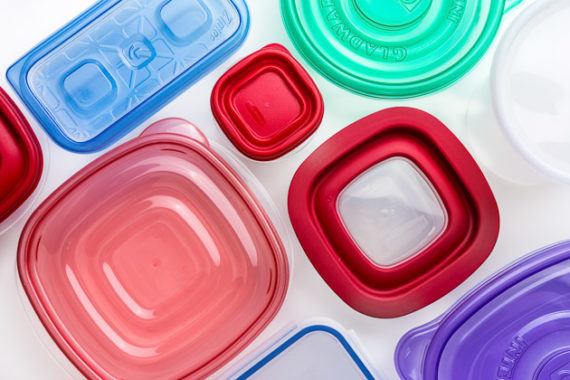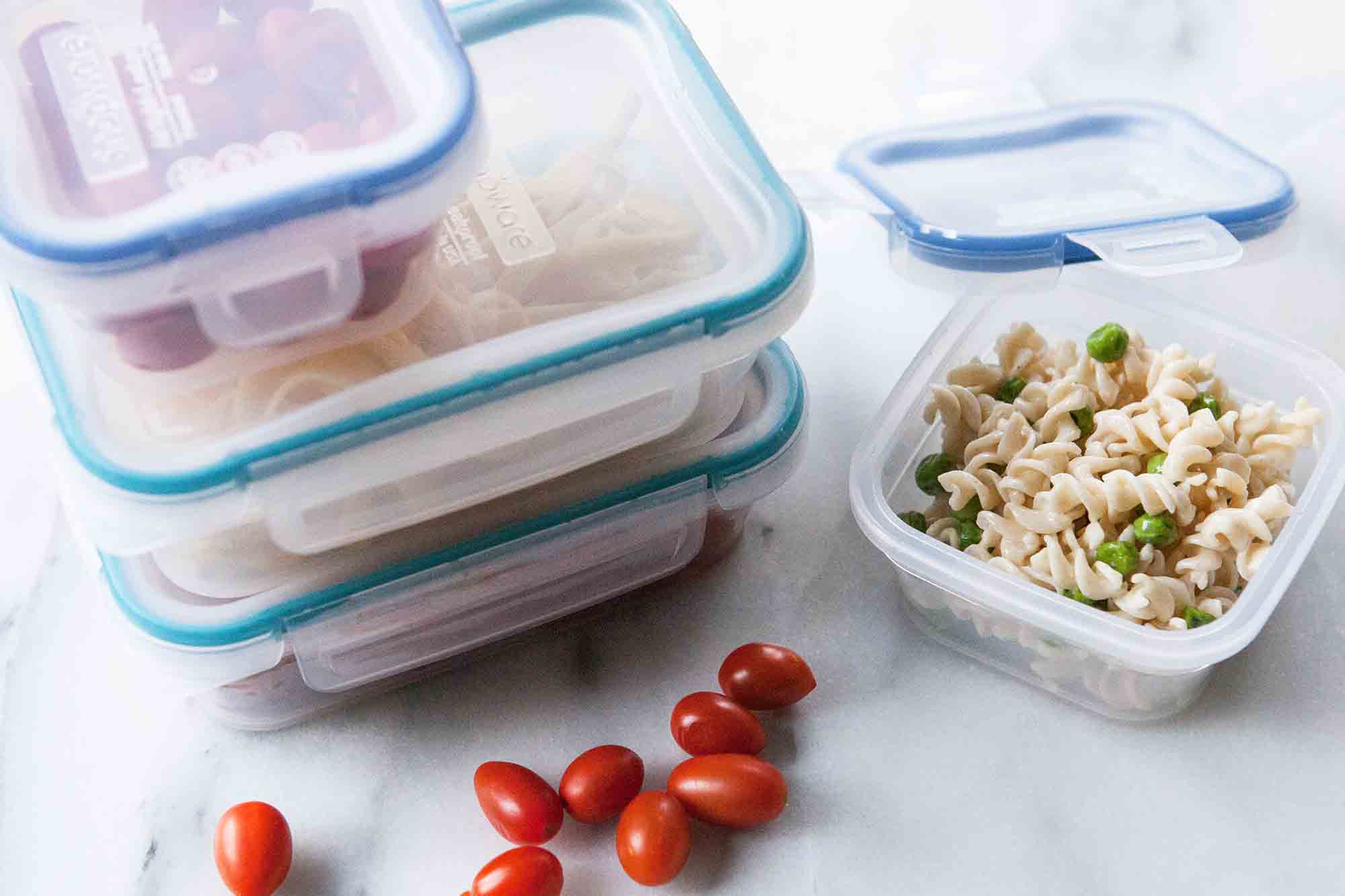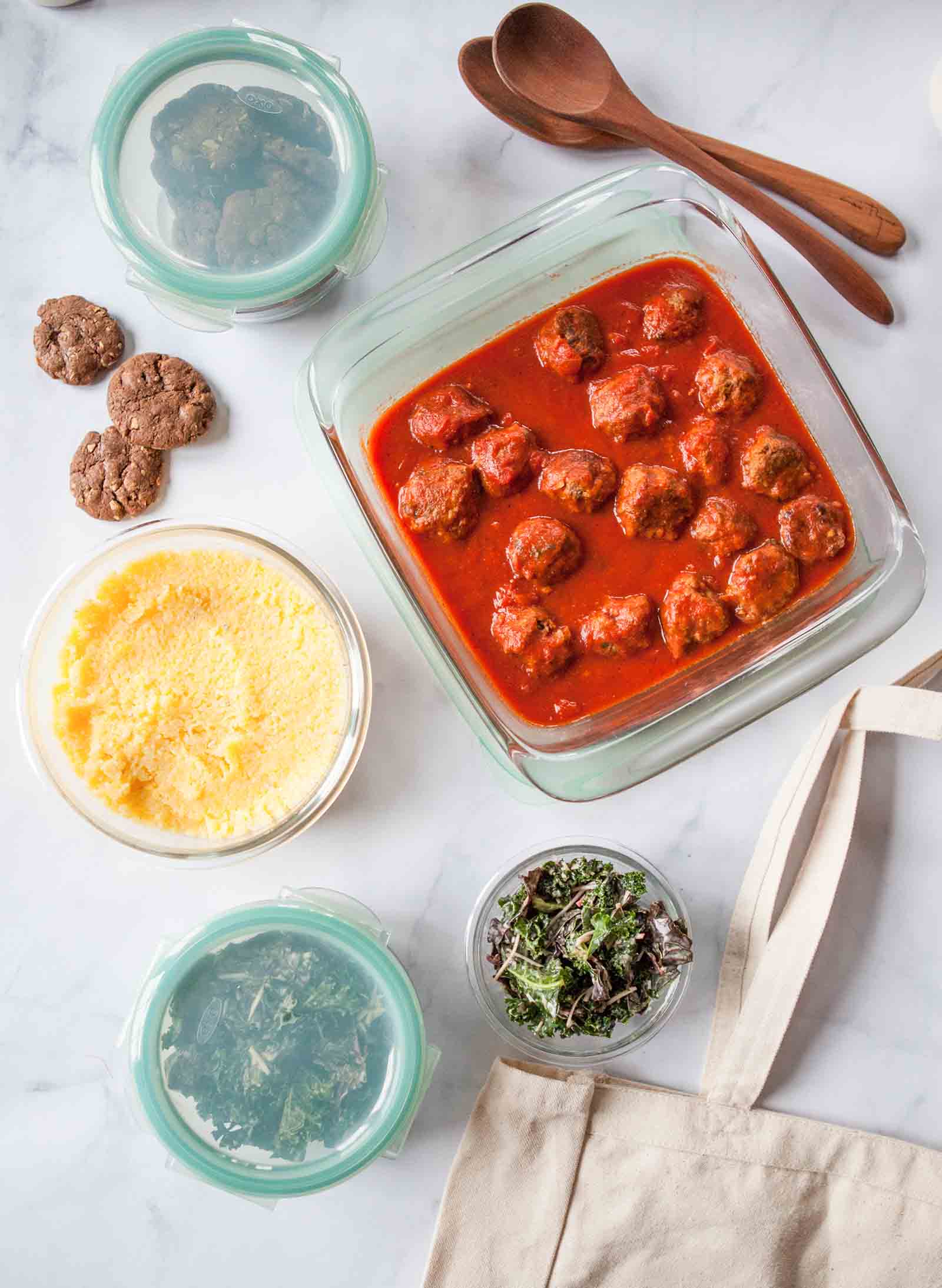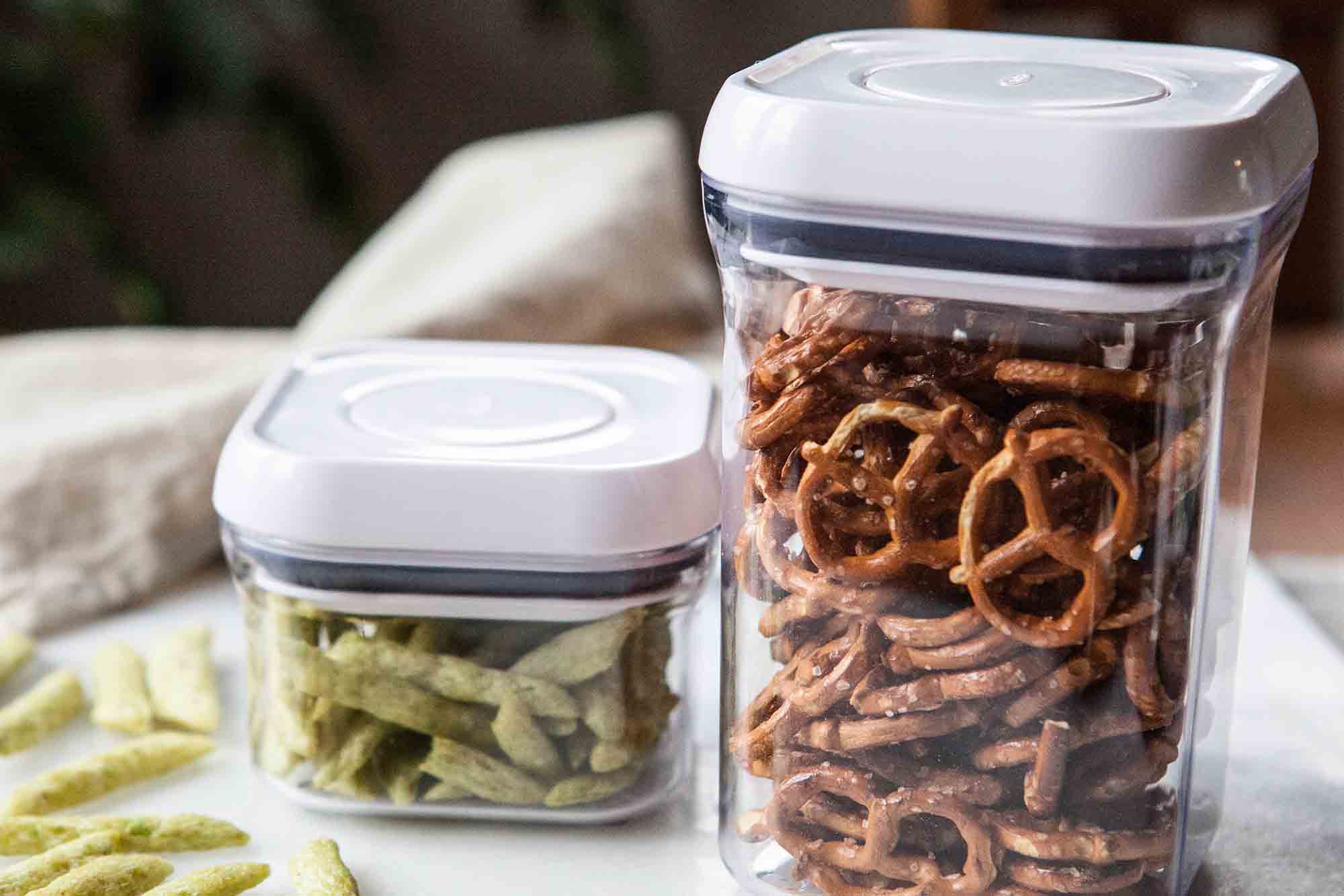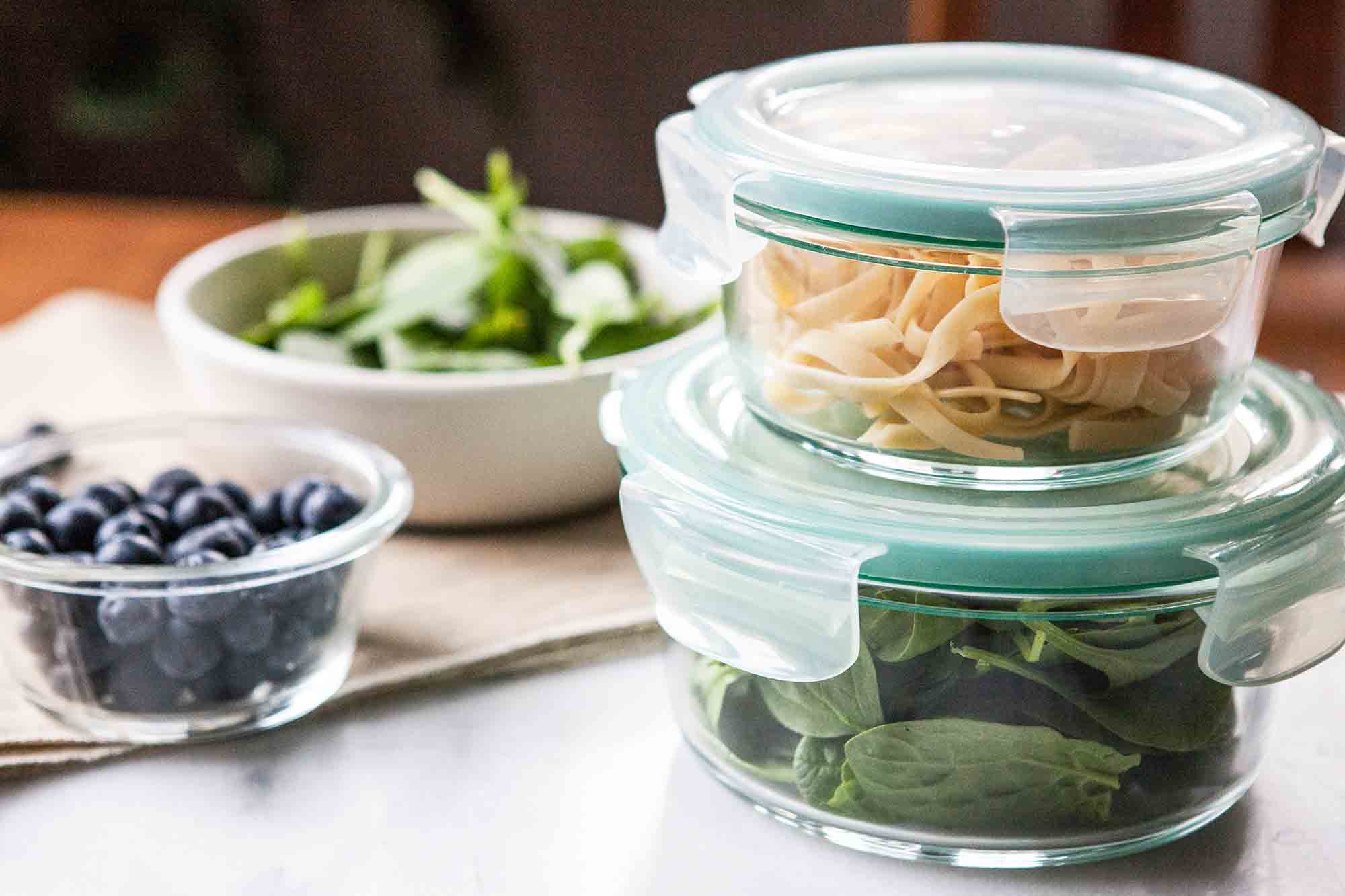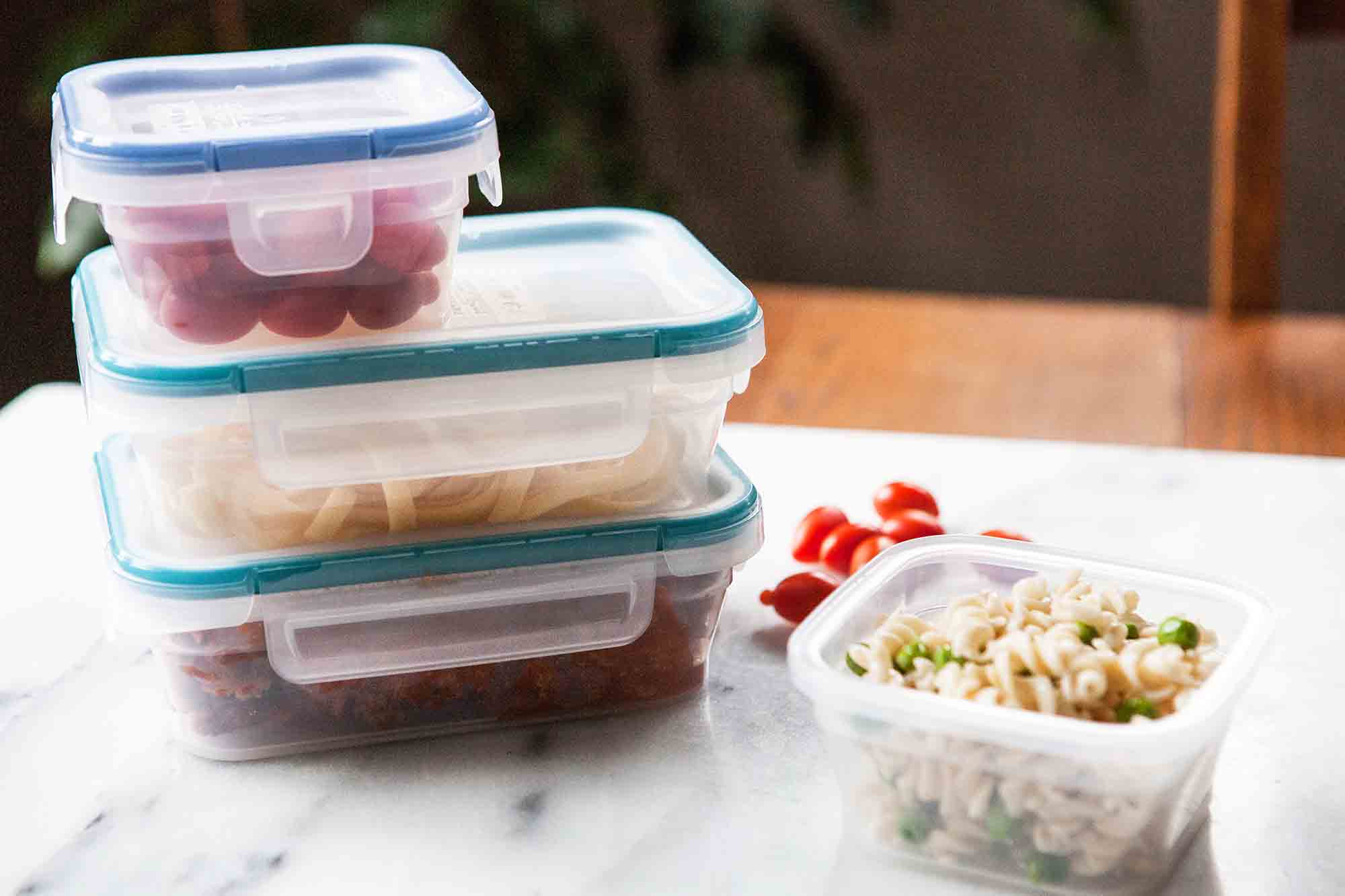Food storage containers are something most of us use almost daily. Whether it’s stocking the fridge with leftovers from last night’s dinner or taking a homemade salad to work, having the right container for the job makes life easier – something I can always get behind.
To avoid having a fridge full of mismatched deli containers, or reheating leftovers in plastic that may not be food safe, here are a few storage tips that’ll leave your kitchen more organized, useful, and streamlined.
Glass or Plastic?
- Glass Containers: Glass containers have a number of pros and cons. These are what we use in our kitchen, and I love that I can store food and reheat it safely directly in the container. The OXO Smart Seal Set is totally leakproof as well, so I always feel safe knowing I’m not going to accidentally slosh soup onto the floor or leak salad dressing onto one of the shelves of the refrigerator. The cons are obviously the weight – they’re heavier than plastic – and the price as they tend to be a spendier choice.
- Plastic Containers: All benefits of glass aside, there’s a time and a place for plastic. When taking leftovers to work or traveling, this easier, lighter, and non-breakable option is certainly preferable. The Snapware Food Storage Set is great because they easily nestle inside one another, are truly leakproof, and are made of a food-safe plastic. I like the fact you can write directly on them to label your leftovers and wipe off the text later for a fresh start.
Shape and Size Matters!
Although this is perhaps more personal preference than anything, considering the shape of your food storage containers is a worthwhile endeavor. I love round containers because, well, most of ours are round so it makes for easy stacking.
That said, I know a lot of people who are into more rectangular-shaped containers because they’re much easier to wedge into open spaces than round ones. You can play a bit of Tetris and maximize your refrigerator and freezer space this way.
Also for storing leftovers, I find it useful to have a set with several different sizes ranging from 1-cup (for leftover sauces or small bites) to 8-cup (great for soups and stews).
Best Containers for Storing Dry Goods
- For dry storage of snacks and cereal, grains like rice and polenta, or other pantry staples, I’m really into the OXO Pop containers. Besides the fact they’re clear so you can see exactly what you’re storing and they look pretty, they have that airtight, super satisfying pop mechanism to keep dried goods fresh. They stack nicely and come in several different sizes, too!
- Large Quantities: If you have larger quantities of kitchen or pantry goods like flour and sugar to store, I love the professional Cambros that you can often find at kitchen supply stores or online. They’re dishwasher and freezer safe and help eliminate the scenario of not having enough storage space to offload an entire 5-pound bag of flour or sugar.
Consider Longevity
Less expensive food containers tend to assume odors and break down much more quickly than higher quality glass or plastic containers.
So while the single-use, inexpensive plastic containers sold at the supermarket can be appealing for a number of reasons, you’ll thank yourself in the long run for investing in a slightly higher quality glass or plastic set.
Is Your Plastic “Safe”?
If I’m going the plastic route for some of my containers, I always try to verify that I’m using a “safe” option, meaning it’s comprised of a material that won’t leach chemicals into the foods and liquids we store in them.
BPA-free plastic is the first thing to look for, but this isn’t always a guarantee. To avoid exhaustive scientific research (who has the time?!), I find the easiest thing to do is pay attention to the “recycling” code on the bottom of most containers:
- Items marked with a 1, 2, 4 and 5 are the best for food storage.
- The number to avoid altogether is a 7, which appear on plastics containing BPA.
Reheating Potential
A lot has been written about the safety of plastic food storage containers and what to look for if you typically microwave or reheat your leftovers directly in the storage container. Call me old school, but I still prefer to reheat in glass containers and remove that consideration altogether.
The cool thing about the OXO Smart Seal containers is I can refrigerate or freeze leftovers and reheat straight from the fridge or freezer. If I’m bringing plastic to work, I’ll just do a quick transfer to an actual bowl or plate in the office kitchen. Either approach works great!
Bright-Pink Beet Hummus Recipe in 5 Minutes! Try it!
Organizing Your Current Container Collection
We’ve all been there. You’re unloading the dishwasher and trying to put away your food storage containers, cursing the cascading pile of mismatched lids and wishing you had more cabinet space.
The key to eliminating this frustration once and for all is two-fold:
- First, spend a few minutes with your container collection and get rid of all the lids that don’t have a corresponding vessel.
- Second, make sure your containers are a uniform shape, so they can easily nest and stack.
If your assortment just won’t conform to organization, then it might be time to think about recycling or donating your old containers and investing in a new set.
ALSO READ They Say McDonald’s Is Removing Artificial Ingredients – Here’s the truth about McDonald’s food!
READ MORE Too Much Food in Your Fridge? What You Should Know About Expiration Dates To Prevent Needless Waste
First appeared on simplyrecipes.com

